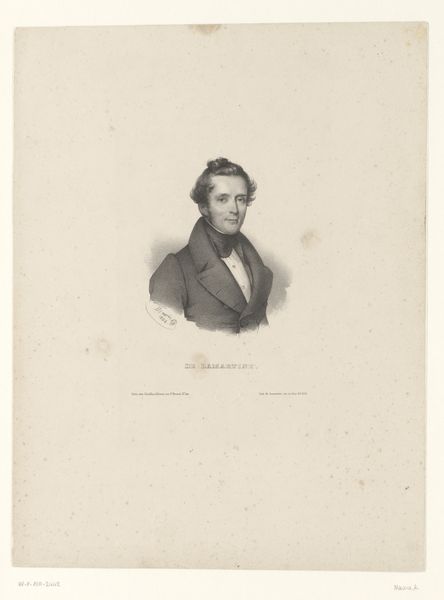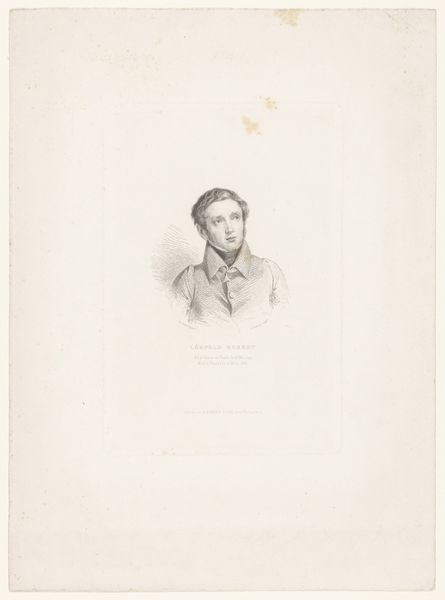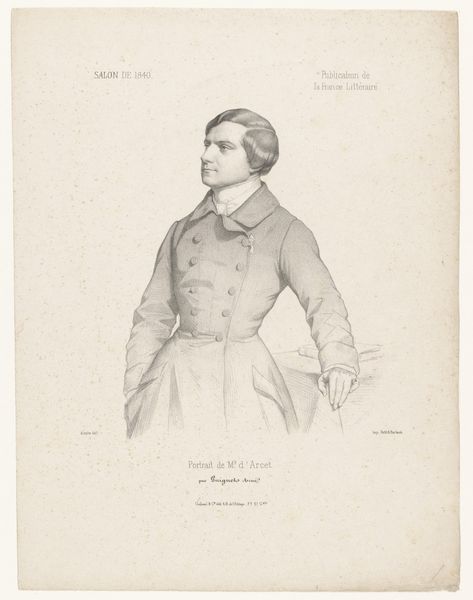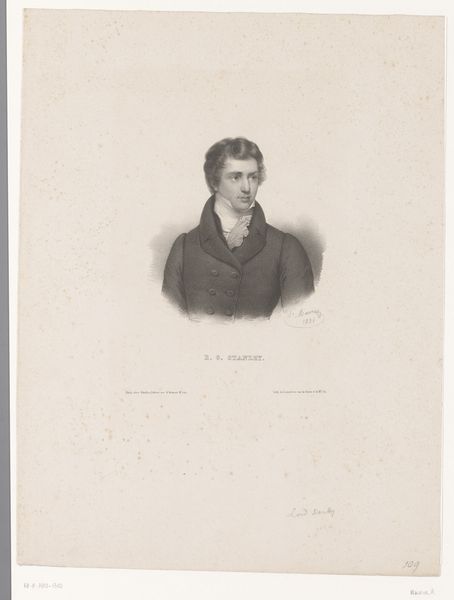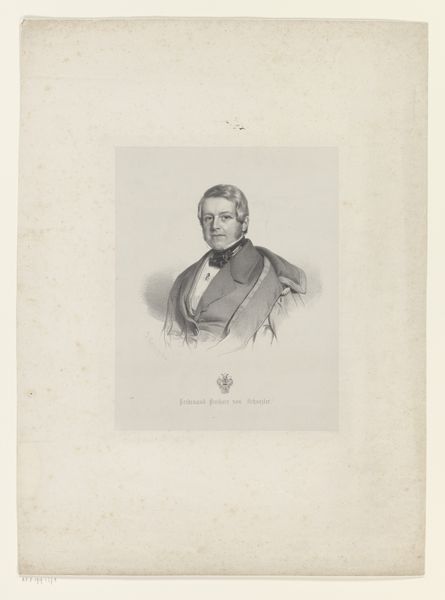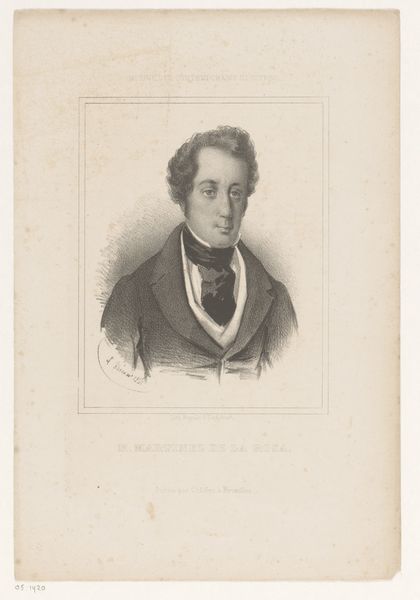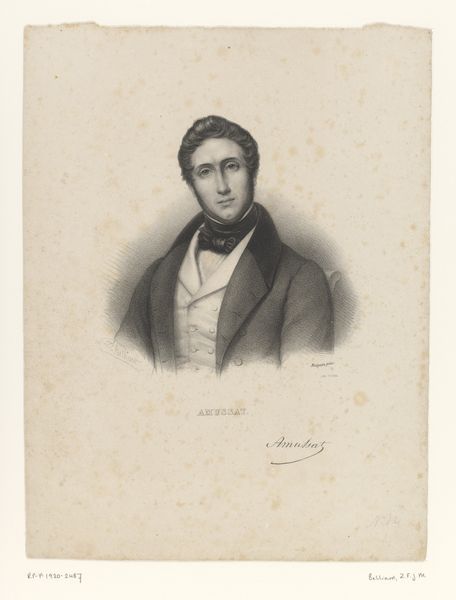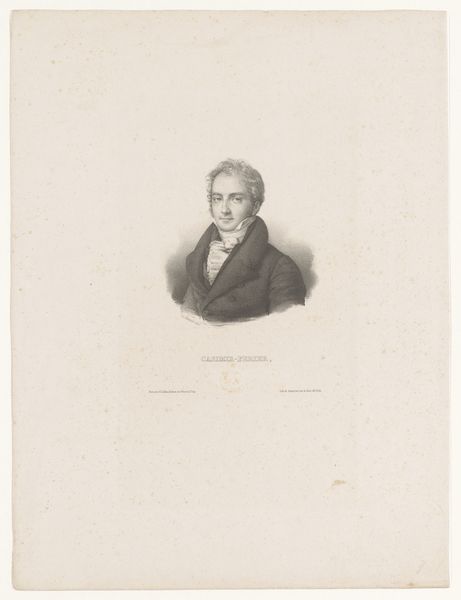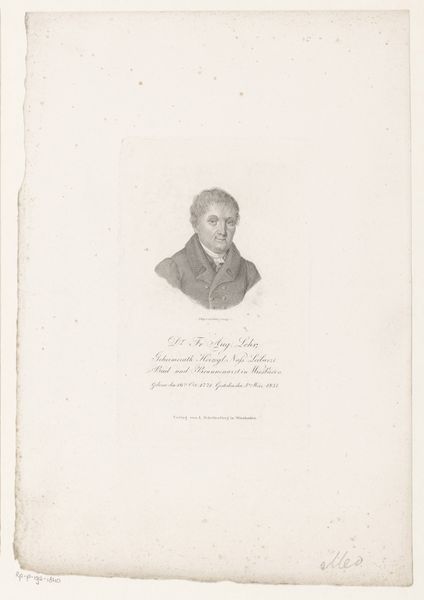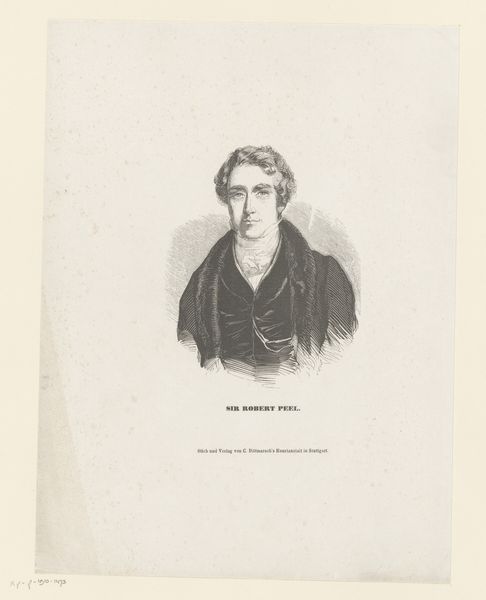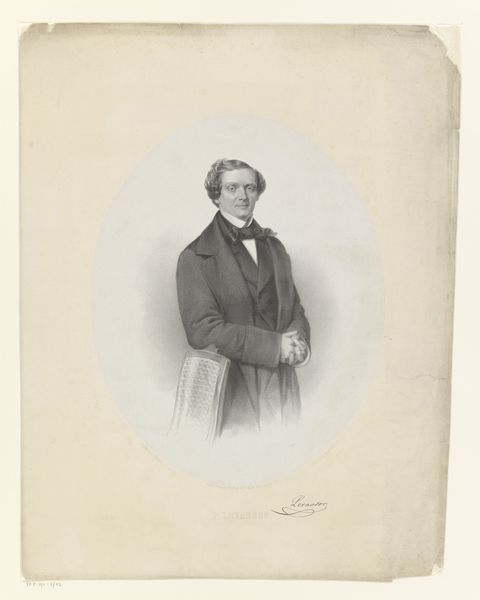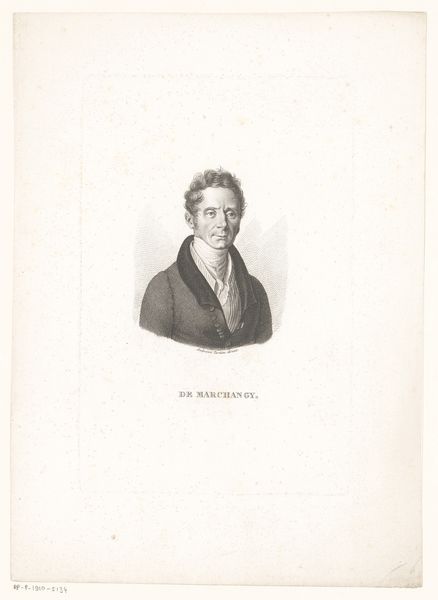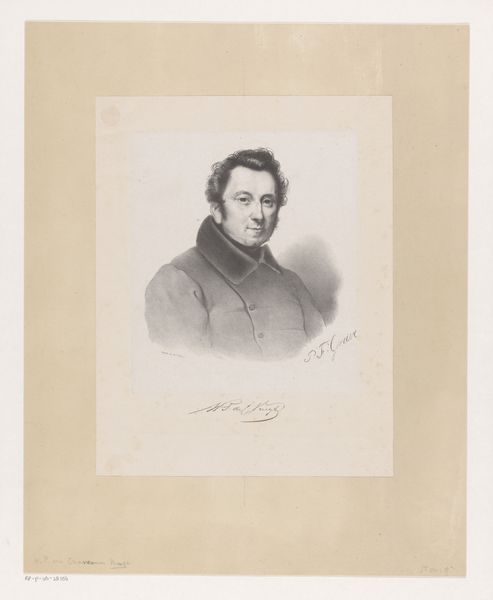
#
pencil drawn
#
aged paper
#
light pencil work
#
photo restoration
#
pencil sketch
#
old engraving style
#
personal sketchbook
#
pencil drawing
#
sketchbook drawing
#
pencil work
Dimensions: height 545 mm, width 364 mm
Copyright: Rijks Museum: Open Domain
Curator: Up next we have Émilien Desmaisons's "Portret van Louis Léopold Robert," made around 1825. It's a pencil drawing on paper. Editor: The pale colors create a wistful feeling, like faded memory. The texture of the aged paper gives it an air of fragility. Curator: It does convey a sense of the past. Desmaisons created this portrait during a period of Neoclassical influence. Notice the subject's clothing – the high collar, the cut of his coat. It speaks volumes about the social status and expectations of the time. Portraiture served an important role in defining social standing and reinforcing established hierarchies. Editor: I agree. The figure clutches what looks like a stylus. Does that reflect his persona and achievements? It strikes me as more than mere embellishment. Curator: That's perceptive. Louis Léopold Robert was a celebrated artist himself. So the inclusion of the stylus can be read as an iconographic symbol—a shorthand way of signaling his profession and status within the art world. It places him within a lineage of artistic practitioners. Editor: The details in his expression are carefully rendered, a mix of intensity and reflection, very appropriate considering Robert's acclaimed career. Was the aim to suggest introspection or calculated promotion? Curator: It’s both, I think. Likeness was obviously important, but so too was presenting Robert in a dignified, respectable manner befitting his public image. The portrait becomes part of the construction of his artistic persona, carefully crafted and disseminated to shape public perception. These portraits are documents reflecting the period. Editor: The fading whispers about legacy, of the ephemeral nature of fame, of the weight we place on the visual image to perpetuate our own cultural narratives. I keep returning to his gaze, though. Curator: Yes, it really pulls you in. Seeing how this drawing participated in establishing and solidifying the cultural status of its subject reveals much about art’s historical role. Editor: I'm left contemplating the quiet persistence of symbols and how even subtle choices impact their lasting resonance.
Comments
No comments
Be the first to comment and join the conversation on the ultimate creative platform.
